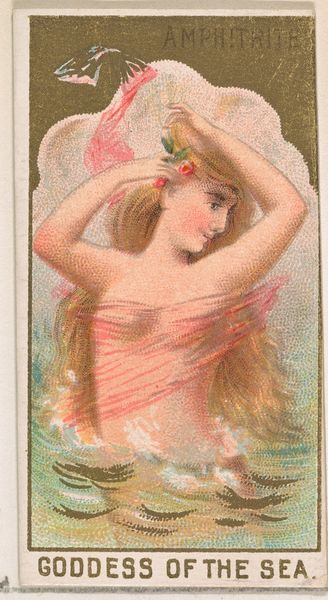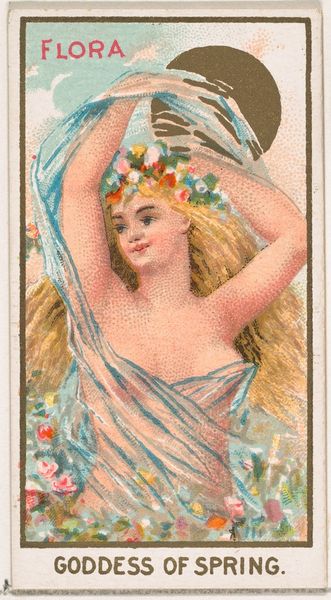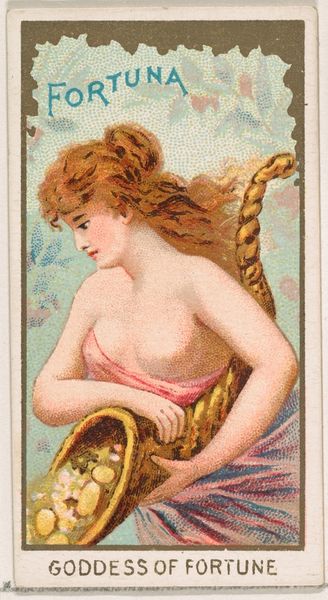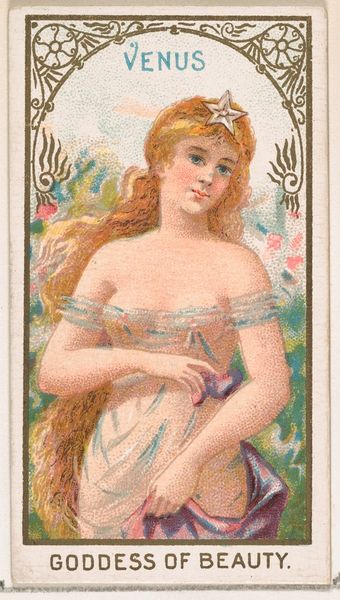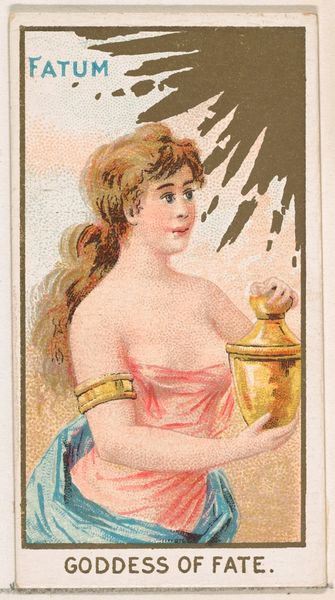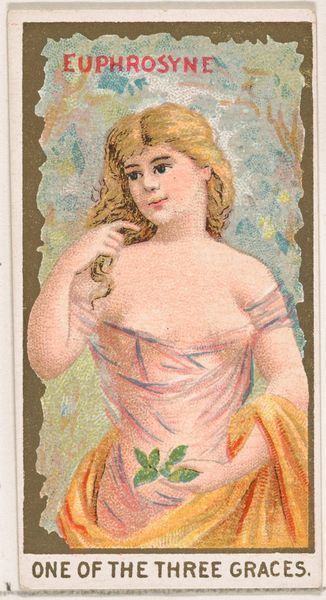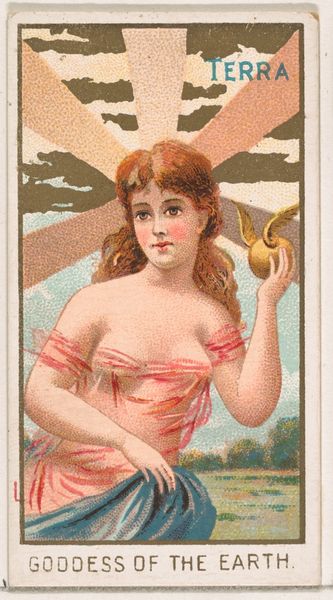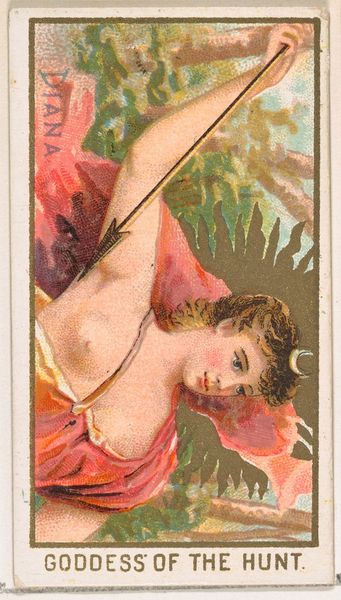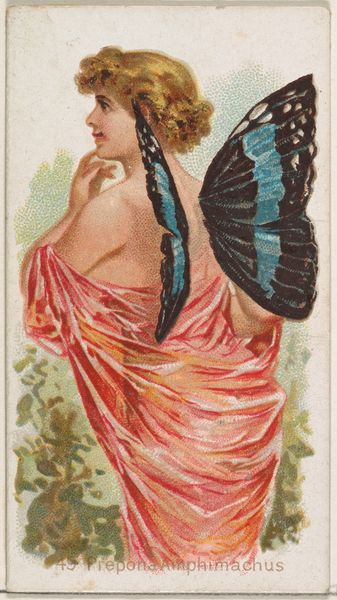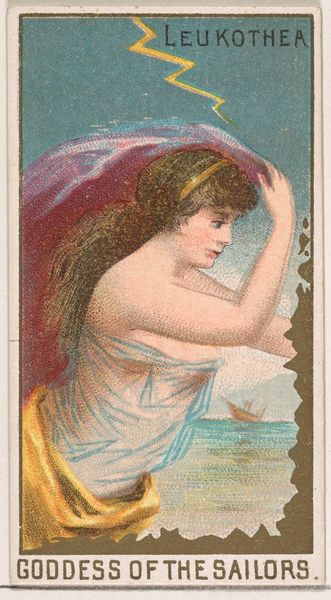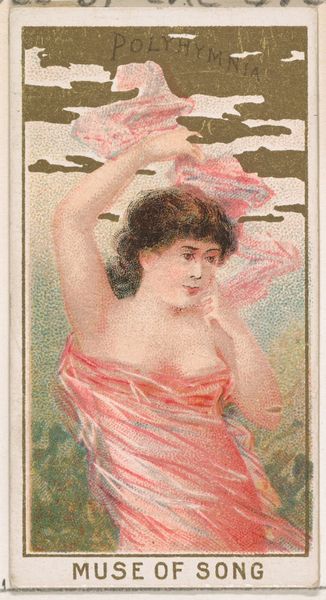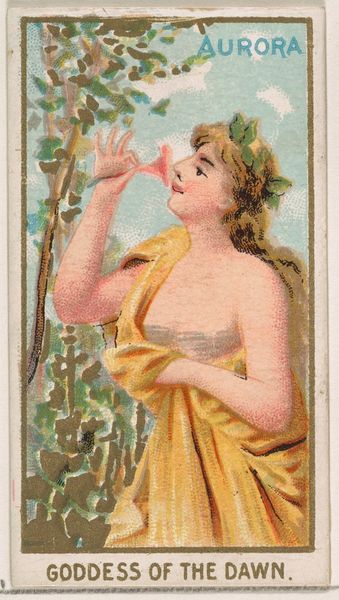
Nox, Goddess of the Night, from the Goddesses of the Greeks and Romans series (N188) issued by Wm. S. Kimball & Co. 1889
0:00
0:00
Dimensions: Sheet: 1 1/2 × 2 3/4 in. (3.8 × 7 cm)
Copyright: Public Domain
Curator: This print is titled "Nox, Goddess of the Night," part of the "Goddesses of the Greeks and Romans" series issued around 1889 by Wm. S. Kimball & Co. The medium here is a lithograph. Editor: The first thing that strikes me is the romantic softness. The color palette is restrained, almost pastel, which gives it a dreamy, ethereal quality. Curator: Absolutely. This wasn't fine art, though. Kimball was a tobacco company. These goddess images were actually trade cards included in cigarette packs, essentially promotional ephemera. They were mass-produced objects meant to be collected. Editor: Interesting. So the appeal wasn’t just the classical theme, but also the accessibility of the medium. Lithography allowed for relatively inexpensive color printing. The very visible dots speak to a democratized, mechanical image-making process. It contrasts quite sharply with the elevated subject matter. Curator: Precisely. This series tells us something about the aspirations of a rising consumer class. Owning, or rather collecting, art, or representations of it, was within reach. It speaks to the ways mythological narratives were being integrated into popular culture and daily life through commercial enterprise. Think about the skill of the draughtsman, versus the purely commercial function of their labour here. Editor: Right. But still, considering the formal choices—the languid pose, the soft lighting, the subject’s eyes closed. This isn't just selling cigarettes; it’s selling an ideal, maybe a vision of tranquility in a rapidly industrializing era. The woman and her flowing tresses merge into the landscape behind. This speaks of formal integration. The golden star shapes set the scene and reflect her sun-kissed locks. Curator: And how the object circulated mattered as much as the image itself. Were these collected? Traded? Or simply discarded? They became a visual shorthand to prestige through a carefully manufactured type of ‘high culture’, cheaply purchased and casually disposed of. Editor: It’s amazing how much this small rectangle reveals, both about the art of that period, and the economy surrounding it. Curator: Indeed. From smoke, a myth, then and now!
Comments
No comments
Be the first to comment and join the conversation on the ultimate creative platform.
